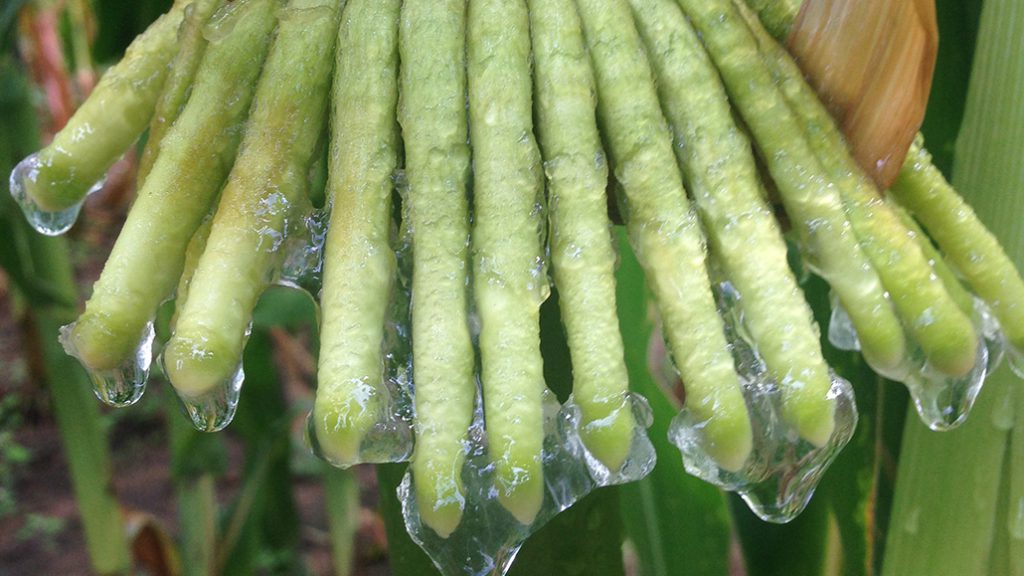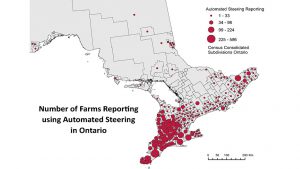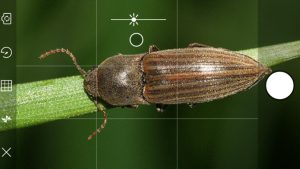Changing nitrogen use
RESEARCHING THE POSSIBILITIES IN MEXICAN CORN

AN OPEN-POLLINATED variety of corn bred by Mexican farmers in the state of Oaxaca may be the key to developing commercial corn varieties that can provide their own nitrogen rather than depending on commercial fertilizer.
The Oaxacan corn “completely turns upside-down the way we think about engineering nitrogen fixation,” says Dr. Jean-Michel Ané, professor of bacteriology and agronomy at the University of Wisconsin-Madison, one of the scientists who has confirmed the corn’s nitrogen-fixing ability.
The corn, which traditional Oaxacan farmers have grown for centuries, first drew the attention of Howard-Yana Shapiro, a Mars Company agricultural officer who was looking for unusual traits that might improve crops globally. Shapiro wondered how the corn could grow on the nutrient-depleted mountain soils of the Oaxacan mountains without receiving any fertilizer.
Researchers found a symbiotic relationship in which the corn produces up to 10 aerial roots that secrete a sugar-laden gel. Bacteria that feed on the gel then draw nitrogen from the air and fix it in a form the corn plant can absorb through the finger-like roots.
The corn can access from 30% to as much as 80% of the nitrogen it needs through this fixation technique, according to Ané, who has spent eight years testing the corn in Mexico and Madison, Wisconsin, to confirm that “this is not an artifact. Technique after technique, they’re all giving the same result, showing high levels of nitrogen fixation in this corn.”
Collaborating researchers at the University of California-Davis used DNA sequencing to show that the microbes in the gel carried genes for fixing nitrogen and that the gel’s high sugar levels and low oxygen content provided the perfect conditions for nitrogen fixation.
Ultimately, researchers used five different techniques to confirm nitrogen fixation.
They also looked at samples of teosinte, the ancestor grass from which corn was developed and discovered that one variety of teosinte also produced a gel that could support nitrogen-fixing bacteria.
NEXT STEPS
Ané says researchers are now focusing on how the fixation trait can be bred into commercial corn cultivars. Success, he says, could be a game-changer for corn grown for grain and silage, and there may be other traits worth pursuing.
“This corn showed us that nature can find solutions to some problems far beyond what scientists could ever imagine,” Ané says. “The scientific community probably underestimated nitrogen fixation in other crops because of its obsession with root nodules.”
“This mechanism is totally different from what legumes use,” says Professor Alan Bennett of the University of California Davis, adding it may exist in other crops as well. “It’s certainly conceivable that similar types of systems exist in many cereals. Sorghum, for example, has aerial roots and mucilage. Maybe others have more subtle mechanisms that occur underground that could exist more widely. Now that we’re aware, we can look for them.”
Bennett’s next goal is to identify the genes that produce the aerial roots and pin down which of the thousands of microbes discovered in the mucilage are actually fixing the nitrogen.
The Oaxacan corn, adapted to grow in the Sierra Mixe region, can reach a towering 16 feet over a nine-month growing season that is not suited to North American conditions. Oaxacan farmers typically plant their corn in April and harvest it in November.
Adopting nitrogen fixation into commercial corn varieties will take time and will not completely replace the need for nitrogen fertilizer, but it could still transform corn production, the researchers say.
“I think there is a lot of potential in these ancient varieties,” Bennett says, while Ané emphasizes the credit due to indigenous farmers who recognized the importance of the gel in their corn crops and bred their corn to amplify the trait. •






















